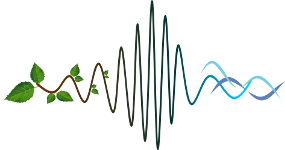Despite their economic and ecological importance, the activity and intake of grazing animals are notoriously difficult to measure. Using acoustic monitoring with cattle we found that: bites can be identified more reliably than by visual observation; chewing jaw movements could be heard and bite and chew actions could be distinguished; there are chew-bites in which a chewing and a biting action are performed in a single jaw movement cycle. Acoustic monitoring became an essential tool in detailed studies of the grazing process and intake. In one study, animals showed large variation in their allocation of jaw movements among pure bites, pure chews, and chew-bites, however these different allocations aligned themselves along an isocline of constant number of chews per bite. This raised the possibility that intake could be estimated from counts of the different types of jaw movement. In an experiment with goats we found a linear relationship between intake and chew number, and a fairly constant chewing coefficient for different bite weights and internal states of the animal. The approach is being developed into a practical tool. Recording capacity is about two weeks in cattle, and the equipment has been deployed on free-grazing animals in commercial herds of cattle, sheep and goats. We have developed software that can identify the sound bursts associated with jaw movements, and this can be applied without calibration to acoustic signals obtained from cattle sheep or goats, and from different recording devices. The program generates the activity timeline of the animal and identifies periods of active grazing and rumination. Acoustic monitoring would appear to be a promising technology that could provide precise and continuous information about grazing behavior, improve our understanding of grazing systems, and improve grazing management decisions. It should be possible to extend the approach to a wider range of animal species.
|
|
|
|
Monday
16
Methods I
› 15:30 - 15:45 (15min) › Grande Galerie Evolution Conference Hall
Acoustic monitoring to infer activity and intake of grazing animals
1 : Agricultural Research Organisation
(ARO)
-
Website The Volcani Center P.O.B. 6, Bet-Dagan 50250 Israel -
Israel
|
| Online user: 2 | RSS Feed |

|

 PDF version
PDF version